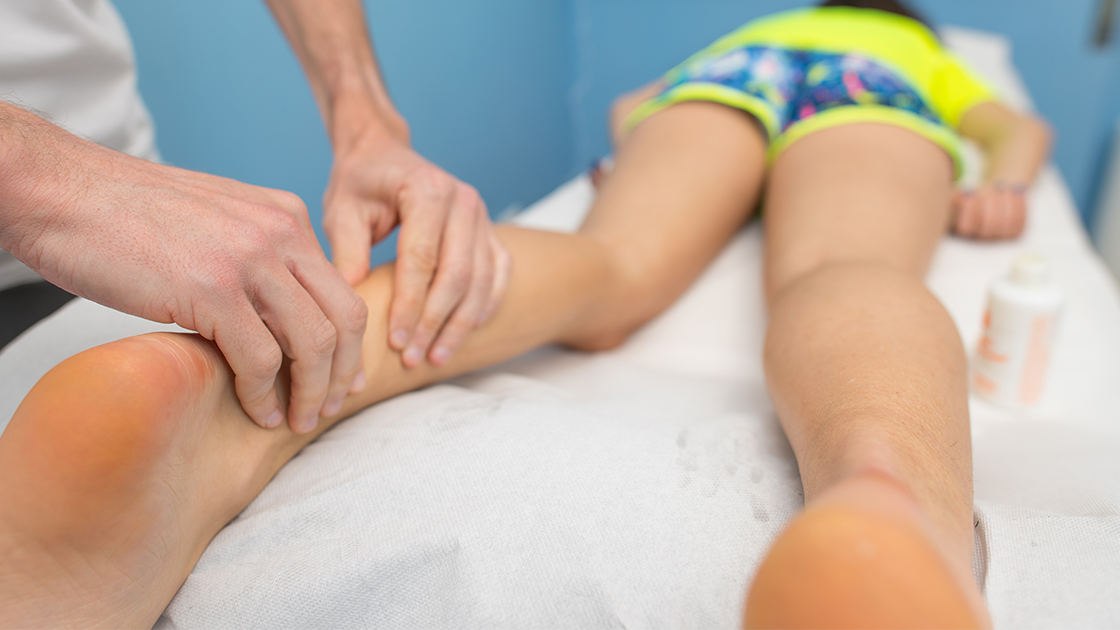Page Contents
Achilles tendonitis, a common condition characterized by inflammation of the Achilles tendon, can be a formidable foe for those seeking relief from foot and ankle discomfort. While traditional treatments have their merits, the emergence of laser therapy presents a victorious alternative. In this blog post, we’ll explore the underlying principles of laser therapy. We’ll delve into how this groundbreaking approach triumphs over Achilles tendonitis, offering a path to recovery and renewed mobility.
Moreover, understanding the underlying principles of laser therapy and its specific application to Achilles tendonitis provides valuable insights into the transformative nature of this treatment. The shift from conventional methods to laser therapy signifies a paradigm change in the approach to addressing this condition. It promises not just relief but a victorious stride towards optimal foot health.
How Does Laser Therapy Work?
Laser therapy, or low-level laser therapy (LLLT), harnesses the power of specific wavelengths of light to stimulate cellular activity at the molecular level. This non-invasive treatment penetrates the skin without causing harm, creating a cascade of biological responses that contribute to healing and pain relief.
Additionally, grasping the mechanism through which laser therapy operates sheds light on its transformative potential for various conditions, including Achilles tendonitis. This innovative approach provides a deeper understanding of how light energy can act as a catalyst for cellular repair, offering a non-invasive and efficient solution for those grappling with foot and ankle discomfort.
a. Cellular Energy Production:
The photons of laser light are absorbed by cellular components, particularly the mitochondria. This absorption leads to an increase in adenosine triphosphate (ATP) production, the energy currency of cells. Enhanced cellular energy boosts the overall metabolic activity of the targeted tissues.
b. Anti-Inflammatory Effects:
Laser therapy reduces inflammation by modulating the activity of inflammatory mediators. This anti-inflammatory effect serves to alleviate swelling and discomfort, ultimately creating an environment conducive to healing.
Additionally, understanding how laser therapy targets inflammatory processes sheds light on its multifaceted benefits. The modulation of inflammatory mediators contributes not only to immediate relief but also to the long-term healing of conditions like Achilles tendonitis. Embracing the anti-inflammatory prowess of laser therapy marks a significant step towards a pain-free and revitalized future.
c. Improved Blood Circulation:
Laser therapy enhances blood circulation in the treated area. Improved blood flow delivers essential nutrients, oxygen, and immune cells to the affected tissues, fostering a more efficient healing process.
d. Stimulated Cellular Repair and Regeneration:
The increased ATP production and improved blood flow contribute to stimulated cellular repair and regeneration. Laser therapy accelerates tissue healing, aiding in the restoration of damaged structures.
How Does Laser Treatment Help Achilles Tendonitis?
a. Reducing Inflammation in the Achilles Tendon:
Achilles tendonitis is characterized by inflammation of the Achilles tendon, often leading to pain and swelling. So, laser therapy’s anti-inflammatory effects target the inflamed tissues, reducing swelling and alleviating the discomfort associated with the condition.
b. Alleviating Pain and Discomfort:
Laser therapy’s analgesic effects provide effective pain relief. By modulating pain signals and promoting the release of endorphins, the therapy helps individuals manage pain levels, allowing them to engage in daily activities with greater comfort.
c. Enhancing Tendon Healing:
The Achilles tendon, crucial for movement and stability, requires efficient healing to regain optimal function. Laser therapy stimulates cellular repair and regeneration within the tendon, expediting the healing process and promoting the restoration of tendon integrity.
d. Improving Range of Motion:
Achilles tendonitis can restrict the range of motion in the ankle, hindering mobility. Laser therapy’s positive impact on cellular repair, combined with its anti-inflammatory effects, contributes to improved flexibility and range of motion in the affected ankle.
e. Non-Invasive Nature and Minimal Downtime:
Laser therapy is a non-invasive treatment, making it an attractive option for individuals seeking relief from Achilles tendonitis without the risks associated with surgical interventions. The minimal downtime ensures a swift return to regular activities.
Conclusion
In the battle against Achilles tendonitis, laser therapy stands out as a victorious contender, offering a non-invasive and effective solution for pain relief and tissue healing. By harnessing the power of light to stimulate cellular activity, laser therapy serves as a beacon of hope for those navigating the challenges of Achilles tendonitis, paving the way for a triumphant return to pain-free movement and renewed vitality.
Moreover, individuals considering laser therapy for Achilles tendonitis should seek guidance from qualified healthcare professionals. These experts can assess the specific characteristics of the condition. They tailor treatment plans and provide insights into what to expect during and after laser therapy sessions. Embracing the victory of laser therapy against Achilles tendonitis not only marks the path to recovery but also signals a future characterized by regained mobility and overall well-being.
